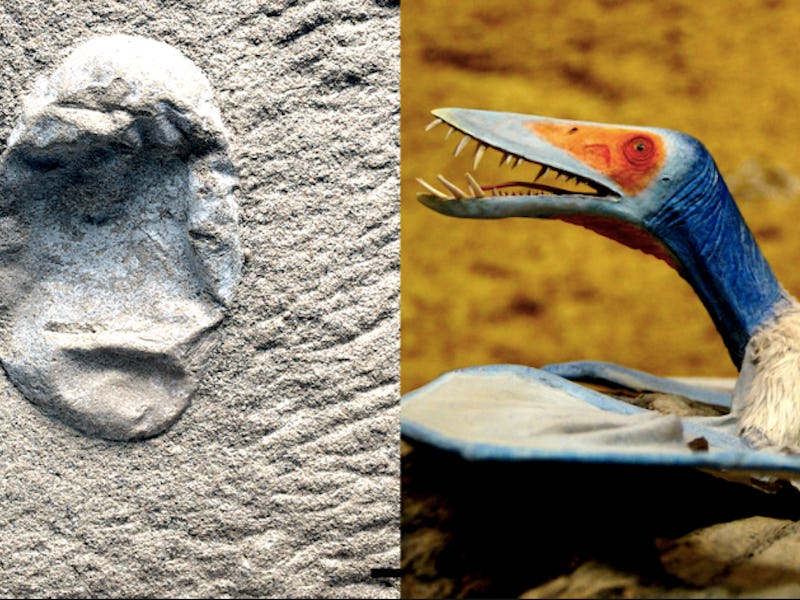Over 200 Perfectly Preserved Pterosaur Eggs Were Just Uncovered in China
It's enough to make one big, reptile omelet.

Considered neither dinosaurs nor birds, pterosaurs were masters of the Earth’s skies millions of years ago. They evolved from a branch of the reptile family tree and, after insects, became the first animals to develop the ability to fly — some sweeping through the air as large as fighter jets and others as small as paper airplanes. But while scientists have an idea of how these creatures lived, how they were born remains a point of speculation.
A huge new discovery, however, is poised to solve that mystery. In a study released Thursday in Science, a team of international scientists led by paleontologist Xiaolin Wang, Ph.D., announce their discovery of 215 pterosaur eggs. These eggs came from the species Hamipterus tianshanensis, which lived during the Early Cretaceous period in northwestern China, and represent the largest group of pterosaur eggs found to date.
The site contained pterosaur eggs and bones.
While the scientists uncovered 215 eggs, they note that there could be up to 300 at the Chinese site, the others hidden underneath. Previously, scientists had only encountered pterosaur eggs twice before, discovering two eggs in China, and one in Argentina. The large number of eggs in the new discovery indicates that there were several nests at the site and that the eggs were laid by different females, which also explains why the eggs vary moderately in size.
The discovery also offers an unprecedented look at pterosaur reproduction. With computer tomography scanning, the scientists were able to look inside the eggs, leading to the discovery that 16 of the eggs contained embryonic remains of the ancient creatures. The most complete of the embryos included cranial bones, a complete lower jaw, and a partial wing.
A preserved pterosaur egg.
With these scans, the scientists were able to determine the stages of growth for pterosaur embryos. For example, the structure that supported the young pectoral muscles appeared to have been underdeveloped during the embryonic stage, indicating that when they were born they were not able to fly immediately. This suggests that newborns most likely had to be taken care of by their parents, much like modern birds. The embryos’ thigh bones, in contrast, were well-developed — meaning that when the little guys hatched, they were probably able to waddle around.
The surface of the eggs themselves show a considerable amount of cracks and deformities, leading scientists to believe that pterosaurs laid soft, thin shells similar to those of modern-day lizards. The hard eggs we associate with modern birds contain an external layer of calcium carbonate.
Despite the immense potential of this discovery, many pterosaur mysteries still remain: What were their nests actually like, and how old were they when they hatched? One of the egg-encased individuals looked to be at least two years old and was still growing at the time of its death, suggesting an extremely long incubation period, while other embryonic fossils from the same site appeared ready to hatch at a much younger age. As pterosaurs left no descendants that are alive today, fossils like these eggs are all we have to know of their past — but there’s always a chance that there’s another discovery to be made in the next site over.
If you liked this article, check out this video of a 99 million-year-old dinosaur fossil.